I don’t want to blow the whole review upfront, but I have listened to a LOT of boom boxes and MP3 radios. Let’s just say it’s a personal hobby of mine and I’ve listened to over dozens in my life. The Milwaukee 2790-20 M18 jobsite radio is one of the better portable radios I’ve ever heard. Period. This is exciting for a couple of reasons. One, because you can use it in even the harshest of jobsite environments without fear of damage, and two, because it has a typical street price of just $120 (without batteries). That’s a great deal no matter how you look at it. Check out our portable jobsite radios round-up for a comparison of cordless radios.
Editor’s Note: Check out our best jobsite radio article for our top picks.
Milwaukee 2790-20 M18 Jobsite Radio Build Quality
Like the smaller Milwaukee M12 Wireless Jobsite Speaker, the Milwaukee 2790-20 M18 jobsite radio is made from a shock-absorbing ABS polymer which surrounds the entire frame. The radio offers protection from light rain as well as other jobsite conditions such as dust, dirt, falls… or getting run over by a pickup truck. OK, maybe it’s not quite that tough. The red, silver, and black stylized ABS enclosure also has the effect of making the Jobsite Radio look like something pulled from the latest Transformers movie. As soon as I unboxed it I wondered if at any moment it would change into a walking robot and try to assimilate my tool collection.
The ABS plastic case has six silver handles that allow the radio to be grabbed from literally any side or direction. At the top is the access door for the compartment that holds the batteries and an optional iPod, iPhone, or other MP3 players. The lid has dual rotating locking levers that keep it shut and a rubber gasket surrounds the opening to ensure no liquid or dirt enters the compartment. Inside are three docking areas. One, on the bottom, is for the new M12 battery, and the one on the right is for the M18 – both lithium-ion technology. The left side dock handles the V18, V28, and even 12-18V NiCd batteries.
Drivers Galore
Moving down the front of the radio, the Milwaukee M18 jobsite radio has a pair of what appeared to be 3/4″ tweeters, and a pair of 4″ poly woofers. Both the tweeters and woofers are set back into the enclosure which, coupled with their material composition, protects them from environmental elements. You can’t dunk this thing underwater, but it’s built to take a lot of abuse.
The sealed rubberized controls are on the front of the radio and an LCD display serves as the repository for displaying the radio band, tuning frequency, battery strength/status indicator, preset, and Mute and Stereo signal status. The controls are intuitive and the entire display is backlit with a red glow for approximately 15 seconds when any buttons are pressed. When off, the display shows the current time (which is maintained by a pair of AA batteries even when the radio has no active Ni-Cd or Li-ion battery within).
One last thing – the back of the 2790-20 jobsite radio has a handy 12V car adapter (remember when these were called cigarette lighter outlets?) This 12V DC adapter can be used to power a cell phone or MP3 charger or anything else rated up to 500mW. Anything over that rating will trip an internal breaker that will automatically reset once the overload is removed. Just above and to the left is a bottle opener which sits at the corner, just outside the built-in 6′ cord wrap. This is not only an easy radio to use, it’s ready to lend a hand when beer-thirty rolls around!
The only major disappointment with the Jobsite Radio is that it doesn’t charge any of the inserted Milwaukee batteries when it is plugged into a 120V outlet. I know, it struck us as being odd as well… Rather than be an oversight, Milwaukee seems to have wanted to keep the retail price point of the radio low – and at a street price of just $120, it has certainly achieved that goal. Perhaps Milwaukee will release an updated “premium” version down the road with the electronics to charge all of the compatible batteries. It would certainly be a welcome addition to the line.
Using the Radio
The Milwaukee 2790-20 M18 jobsite radio is extremely intuitive to use. There is an oversized Power button on the right of the LCD screen that takes the unit out of standby. A Mode button switches between FM, AM, and Aux (which pulls from the 1/8-inch jack located in the battery/storage compartment). Since you are essentially using the Jobsite Radio as either amplified speakers for an MP3 player or, well, a radio, there isn’t too much to learn. To dial in an FM radio station, for example, you hit the Mode button until FM is indicated in the LCD screen and then either use the Left and Right navigation pad controls or the Scan button to tune in to the desired station. Once you find something you like, you can hold down the Preset button and select any of 10 possible locations to store it. No matter what you want to do, it doesn’t take long.
There is a button that brings up the clock momentarily (you can hold it down to set the time) and another for EQ which allows adjustment of Bass and Treble. A Mute button stops all audio from coming out while maintaining the active status of the Jobsite Radio. The buttons are all very responsive and quite easy to use with gloved hands. There is no remote control, nor would we want one in a radio of this type. There was no questions that Milwaukee did some basic use testing with this product before sending it to mass production.
Milwaukee 2790-20 M18 Jobsite Radio Listening Tests
We played a variety of music on the Milwaukee Jobsite Radio and were taken aback by its smooth sound. I expected loud and crisp, but I wasn’t prepared for the relatively accurate response I heard from the speakers. Apparently the 4″ woofers included with this product are tuned accurately and the tweeters provide a smooth top-end. Together they somehow avoided the typical distorted “boom and sizzle” most portable radios generate. If there is a downside it’s that the 2790-20 radio will distort before you can crank the amplifiers up to full volume.
With more dynamic music (think pre-90s tunes) the system typically put out about 86dB SPL (measured from 3 feet away using our SPL meter) before the speakers audibly broke up. That equated to two or three bars past the volume centerline. On more current music, which is typically compressed and “louder”, the sound output got up to around 96dB SPL. You’ll immediately note that the radio will sound much louder overall indoors because the reflected sound amplifies what’s coming out of the speakers. This is to be expected, but the real test is using it outdoors with no boundaries – and that’s just what we did.
Smooth Bass
What I liked most was the smooth bass that wasn’t peaky and didn’t have that “boomy” sound so often associated with less expensive portable radios (why do you think they call them boom boxes?) Both male and female vocals were also natural sounding and lacked the compression often heard during peaks and sibilance. Don Henley’s vocals on the Eagles’ “New York Minute” pumped out some smooth midrange, and Timothy Schmidt’s bass laid out the low extension with plenty of punch. For something more recent, we popped in Avril Lavigne and queued up “My Happy Ending”. We found that we could crank this tune louder and it filled our jobsite with tons of music. It didn’t override the sound of circular saws or an active air compressor, but it did play loud enough to be heard – even with lots of hammering and the use of air nailers.
Most of our music came from high quality AAC-encoded tracks on an iPod Touch, however the FM radio performance was top notch as well and we also got in our share of talk radio. During the course of testing, one odd thing we noted was that the radio would give an audible thump whenever it was turned off. This occurred during AM, FM, or Auxiliary use and was consistent regardless of volume level or mode. It never seemed to damage anything, but Milwaukee might want to implement some kind of power-down mute on the amps at some point during a future update.
Conclusion
I have never listened to a boombox or portable radio that sounded as good as the Milwaukee 2790-20 M18 jobsite radio. It plays with rich and low, bass, doesn’t distort at normal levels and is extremely handy for use with an iPod Touch, iPhone or any portable MP3 player. Radio reception was average, but certainly not poor, and the usability of the radio is well above-average. This is the best portable radio we’ve ever heard and it’s got the competition beat on pricing and useful features. Overall, this is simply an easy-to-use, durable radio that can fill up your jobsite with tunes all week long on almost any Milwaukee battery—new or old. We would highly recommend this product for any contractor or handyman who wants to add some quality sound to the job.

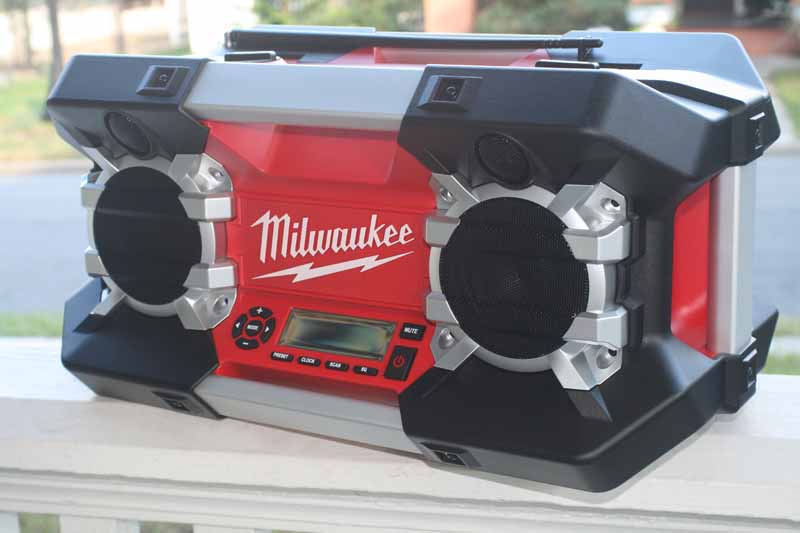
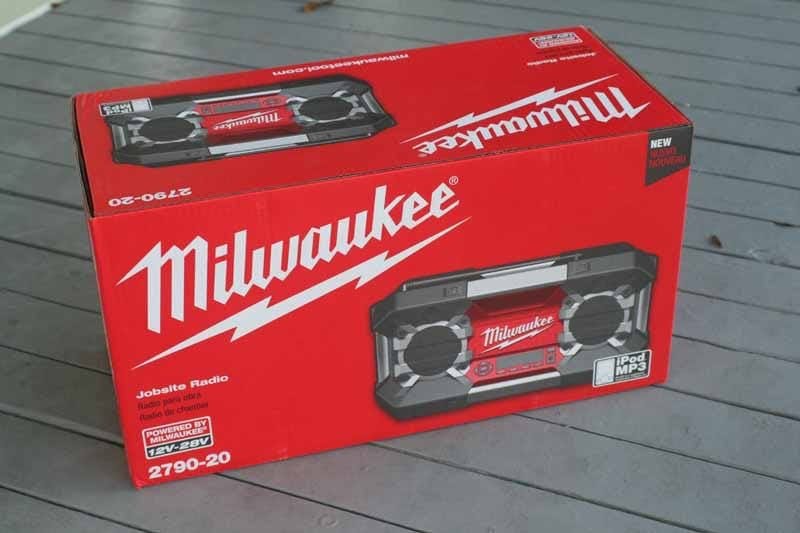
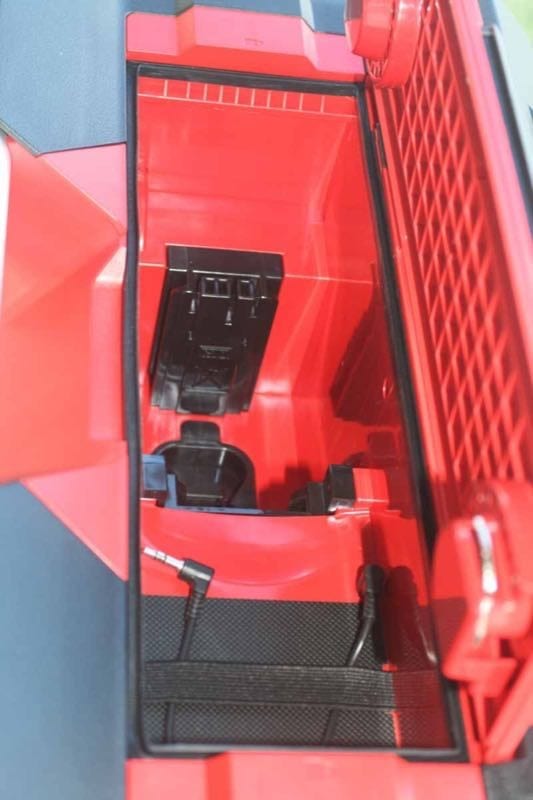
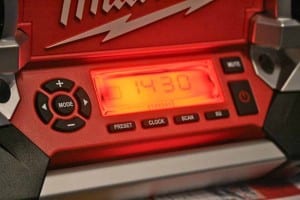
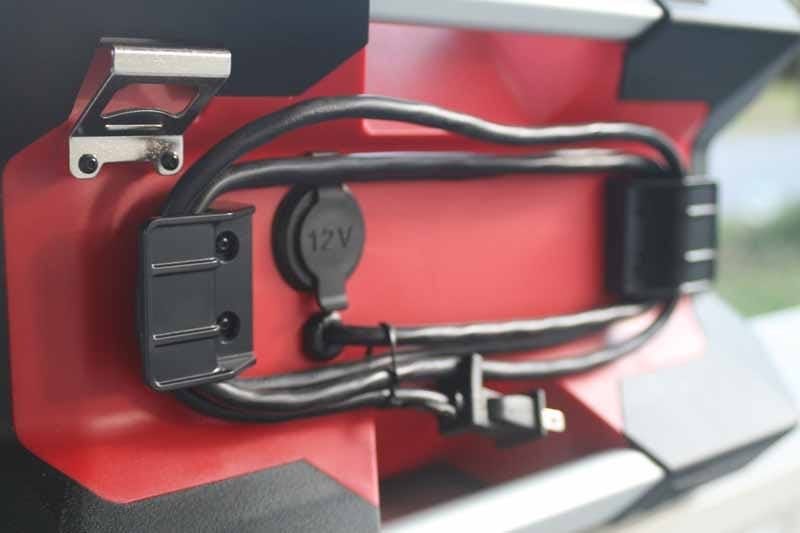
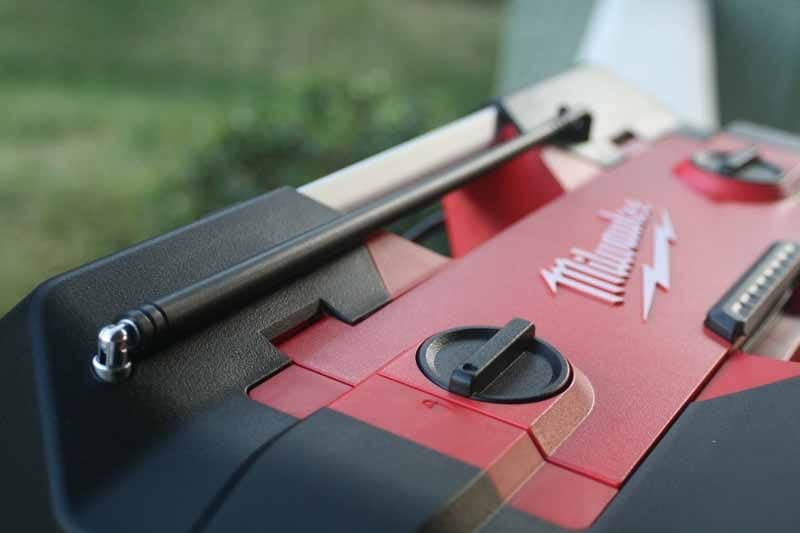


Lol… Maybe check ebay one of these radios that’s in decent shape (cleaned up and working) goes for more than they were when they were new!!!
I have 2 and they get used 6 days a week in a construction environment (finishing interior of new homes) and have been for over 7 years now and have not had one single issue!!!
They are an awesome radio and still are!!!
It has smooth balanced sound. Better than any other job site radio. The mp3 generation wont get it.
Hi Wes. Were you aware this review is nearly 9 years old? Milwaukee has a charging radio now with USB charging etc. Also, they released this same radio with USB charging shortly after this review with no price change. Not terribly surprised that a 9-year-old radio didn’t fetch $60.
Mi radio milwaukee jobsite no esta sintonizando emisoras q será